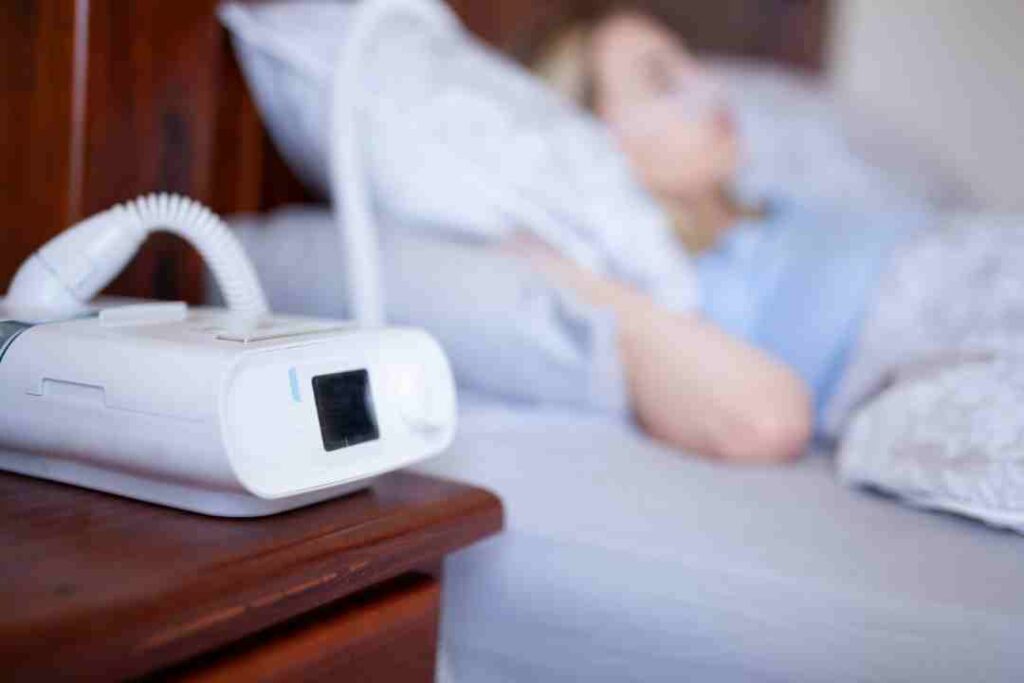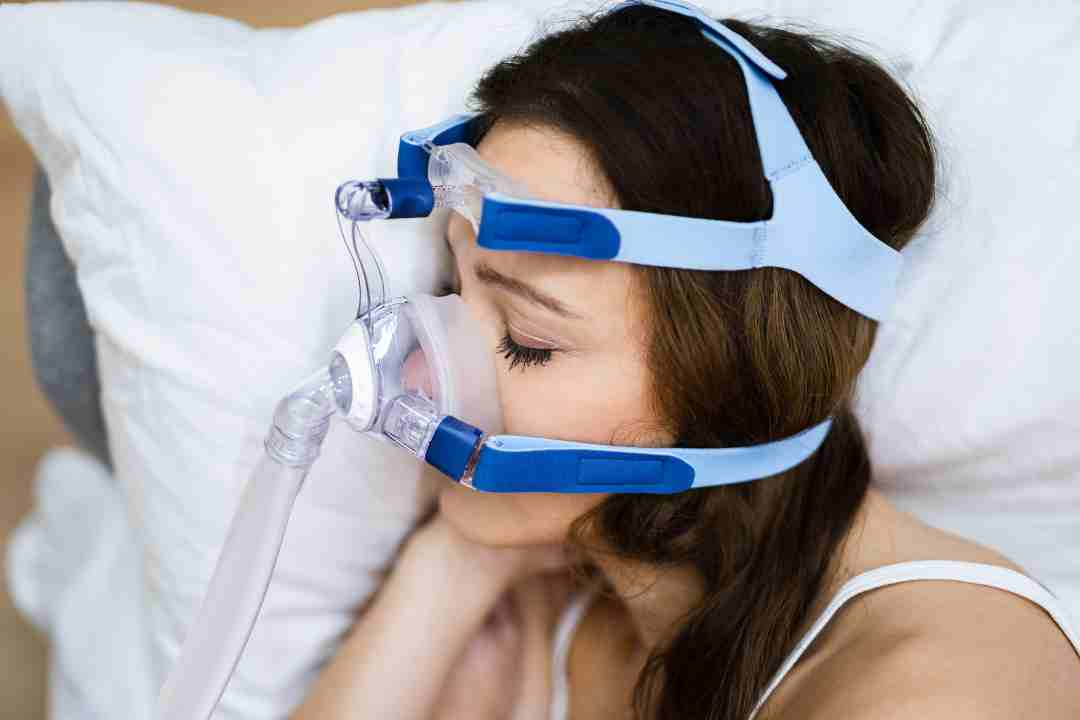Sleep apnea is a common sleep disorder that affects millions of people worldwide. For those with sleep apnea, their breathing is repeatedly interrupted while they sleep, causing them to wake up frequently throughout the night. This disruption in sleep can lead to various health problems, including fatigue, headaches, and even cardiovascular issues.
Understanding Sleep Apnea and the Role of CPAP Machines
In order to effectively treat sleep apnea, medical professionals often recommend the use of Continuous Positive Airway Pressure (CPAP) machines. CPAP machine Australia work by delivering a constant flow of air pressure through a mask, allowing the airway to remain open while the individual sleeps. This helps to prevent the interruptions in breathing and allows for a more restful night’s sleep.
What is Sleep Apnea?
Sleep apnea is a sleep disorder characterized by pauses in breathing or instances of shallow breathing during sleep. These pauses can last from a few seconds to a few minutes and can occur multiple times throughout the night. There are three main types of sleep apnea: obstructive, central, and complex sleep apnea syndrome. The most common type is obstructive sleep apnea, which occurs when the throat muscles relax and block the airway.
Obstructive sleep apnea can have significant effects on a person’s overall health and well-being. The repeated interruptions in breathing can lead to daytime fatigue, difficulty concentrating, and increased risk of accidents. Additionally, sleep apnea has been linked to a variety of other health problems, including high blood pressure, heart disease, and stroke.
It is important to seek medical attention if you suspect that you or a loved one may have sleep apnea. A sleep specialist can perform a thorough evaluation and determine the most appropriate treatment options.

How Do CPAP Machines Work?
CPAP machines work by delivering a continuous stream of air pressure through a mask that covers the nose and/or mouth. The air pressure acts as a splint, keeping the airway open and allowing for normal breathing during sleep. The amount of air pressure needed varies from person to person and is determined through a sleep study conducted by a sleep specialist.
Using a CPAP machine can have a significant impact on a person’s quality of life. By ensuring that the airway remains open throughout the night, CPAP therapy helps to reduce the frequency and severity of breathing interruptions. This can lead to improved sleep quality, increased daytime alertness, and reduced risk of associated health problems.
CPAP machines are available in a variety of models and designs to accommodate individual preferences and needs. Some machines offer additional features such as humidification to prevent dryness and irritation of the airway. It is important to work closely with a healthcare professional to select the most appropriate CPAP machine and mask for optimal comfort and effectiveness.
While CPAP therapy is highly effective for many individuals with sleep apnea, it is important to note that it may not be suitable for everyone. In some cases, alternative treatments such as oral appliances or surgery may be recommended. It is essential to consult with a healthcare professional to determine the most appropriate treatment plan for each individual.
The Evolution of CPAP Machines
Over the years, CPAP machines have undergone significant advancements and improvements in design and functionality. From the early days of bulky and loud machines to the sleek and user-friendly devices available today, CPAP technology has come a long way in providing effective treatment for sleep apnea.
The Early Days of CPAP Machines
When CPAP machines were first introduced, they were large, cumbersome devices that required a significant amount of space and made a considerable amount of noise. These early machines consisted of a box-like unit that housed a motor and a fan, which generated the air pressure needed. The air pressure was delivered through a long tube connected to a mask that the individual wore while sleeping.
While these early CPAP machines were effective in treating sleep apnea, they were not without their challenges. The size and noise of the machines made it difficult for individuals to sleep comfortably, and the long tube connected to the mask often caused discomfort and restricted movement during sleep. Despite these challenges, the introduction of CPAP machines marked a significant breakthrough in the treatment of sleep apnea. You can also read about Is it good to wash CPAP masks in a dishwasher by visiting https://fattofitmyquest.com/is-it-good-to-wash-cpap-masks-in-a-dishwasher/
Modern Advances in CPAP Technology
Advances in technology have led to the development of smaller, quieter, and more portable CPAP machines. The modern CPAP machines are compact and lightweight, making them easier to transport and use while traveling. Additionally, many of these machines now include advanced features such as built-in humidifiers, Bluetooth connectivity for data tracking, and automatic pressure adjustment based on the individual’s breathing patterns.
One of the key advancements in modern CPAP machines is the integration of built-in humidifiers. These humidifiers help to alleviate dryness and discomfort that some individuals experience while using CPAP therapy. By adding moisture to the air, the humidifiers improve overall comfort and make it easier for individuals to adhere to their treatment regimen.
Another notable advancement in CPAP technology is the inclusion of Bluetooth connectivity. This feature allows individuals to easily track their sleep data using smartphone apps or other compatible devices. By monitoring their sleep patterns and CPAP usage, individuals can gain valuable insights into the effectiveness of their treatment and make any necessary adjustments with the guidance of their healthcare provider.
Furthermore, many modern CPAP machines now feature automatic pressure adjustment. This innovative technology monitors the individual’s breathing patterns throughout the night and adjusts the air pressure accordingly. This not only enhances comfort but also optimizes the effectiveness of the treatment, ensuring that the individual receives the appropriate level of air pressure to keep their airway open and prevent sleep apnea events.
In conclusion, the evolution of CPAP machines has revolutionized the treatment of sleep apnea. From the early days of bulky and noisy devices to the compact and feature-rich machines available today, CPAP technology continues to improve, providing individuals with a more comfortable and effective solution for managing their sleep apnea. With ongoing advancements and research, the future of CPAP machines looks promising, offering even more innovative features and improved treatment outcomes.
Latest Innovations in CPAP Machines
As technology continues to evolve, so do CPAP machines. The latest innovations in CPAP technology have further improved the user experience and address some of the common challenges faced by individuals using these devices.
CPAP machines have come a long way since their inception. With advancements in technology, they have become more efficient, user-friendly, and effective in treating sleep apnea. Let’s explore some of the latest innovations in CPAP machines that have revolutionized the field.
Smart CPAP Machines
Smart CPAP machines are designed to provide a more personalized and customizable sleep therapy experience. These machines can monitor and adjust the air pressure based on the individual’s breathing patterns throughout the night, ensuring optimal therapy results. By using advanced algorithms and sensors, smart CPAP machines can detect subtle changes in the user’s breathing and make real-time adjustments to maintain the ideal air pressure.

But that’s not all! Some smart CPAP machines also come with built-in sleep tracking capabilities, allowing users to monitor their sleep quality and make adjustments as needed. These machines can provide valuable insights into sleep patterns, sleep stages, and even snoring levels. With this information at hand, individuals can work towards improving their sleep quality and overall well-being.
Travel-friendly CPAP Devices
For individuals who frequently travel, portable and travel-friendly CPAP devices are a game-changer. These devices are compact and lightweight, making them easy to pack and carry while on the go. Gone are the days of lugging around bulky machines that take up valuable suitcase space.
But the convenience doesn’t stop there. Some travel-friendly CPAP machines also come with additional power options, such as battery packs or adapters for use in different countries. This means that individuals can continue their sleep therapy uninterrupted, no matter where they are in the world. Whether it’s a business trip or a vacation, travel-friendly CPAP devices ensure that individuals can prioritize their sleep health without any hassle.
Noise Reduction Technology in CPAP Machines
One common complaint among CPAP machine users is the noise generated by the device. The constant humming or buzzing sound can be disruptive, making it difficult to fall asleep or stay asleep throughout the night. However, the latest CPAP machines now incorporate noise reduction technology to minimize noise levels during operation.
By using innovative sound-dampening techniques and quieter motors, these machines provide a more peaceful sleep environment for both the user and their sleep partner. The noise reduction technology ensures that individuals can enjoy a restful night’s sleep without any unnecessary disturbances.
These are just a few examples of the latest innovations in CPAP machines. As technology continues to advance, we can expect even more exciting developments in the field of sleep apnea treatment. With each new innovation, CPAP machines become more effective, comfortable, and user-friendly, helping individuals with sleep apnea improve their quality of life and overall well-being.
The Impact of Innovations on Patient Experience
The advancements in CPAP technology have had a significant impact on the overall patient experience in treating sleep apnea. These innovations have addressed many of the common challenges faced by individuals using CPAP machines, leading to improved comfort, usability, and treatment outcomes.
Improved Comfort and Usability
Modern CPAP machines are designed with user comfort in mind. They feature soft, cushioned masks that provide a better seal and reduce skin irritation. The machines also have adjustable straps and headgear to ensure a proper fit. With improved comfort and usability, individuals are more likely to comply with their prescribed sleep therapy, leading to better treatment outcomes.
Enhanced Data Tracking and Reporting
Data tracking and reporting have become integral features in modern CPAP machines. These machines are equipped with advanced sensors that collect data on the individual’s breathing patterns, usage hours, and therapy effectiveness. This data can be easily accessed and shared with healthcare providers, allowing for more accurate monitoring and adjustments to the treatment plan as necessary.
Future Trends in CPAP Machine Development
As technology continues to evolve, the future of CPAP machines looks promising. There are several anticipated technological advances that could further improve the treatment of sleep apnea and enhance the overall patient experience.
Anticipated Technological Advances
One anticipated development is the integration of artificial intelligence (AI) into CPAP machines. AI algorithms can analyze data collected by the machine and provide personalized recommendations for optimizing therapy settings. This could lead to more effective treatment outcomes and improved patient compliance.
The Role of Artificial Intelligence in Sleep Apnea Treatment
Artificial intelligence has the potential to revolutionize sleep apnea treatment. With the integration of AI algorithms, CPAP machines can continually learn and adapt to the individual’s breathing patterns, making real-time adjustments to ensure optimal therapy. This personalized approach has the potential to improve treatment outcomes and enhance the overall quality of sleep for individuals with sleep apnea.
In conclusion, the latest innovations in CPAP machines have transformed the treatment of sleep apnea. From the early days of bulky and noisy devices to the sleek and user-friendly machines available today, CPAP technology has come a long way. With advancements such as smart CPAP machines, travel-friendly devices, and noise reduction technology, individuals with sleep apnea now have access to more comfortable and effective treatment options. As technology continues to advance, the future of CPAP machines holds even more promise, with the integration of artificial intelligence and personalized sleep therapy. These developments have the potential to improve treatment outcomes and enhance the overall quality of life for individuals with sleep apnea.

Leave a Reply